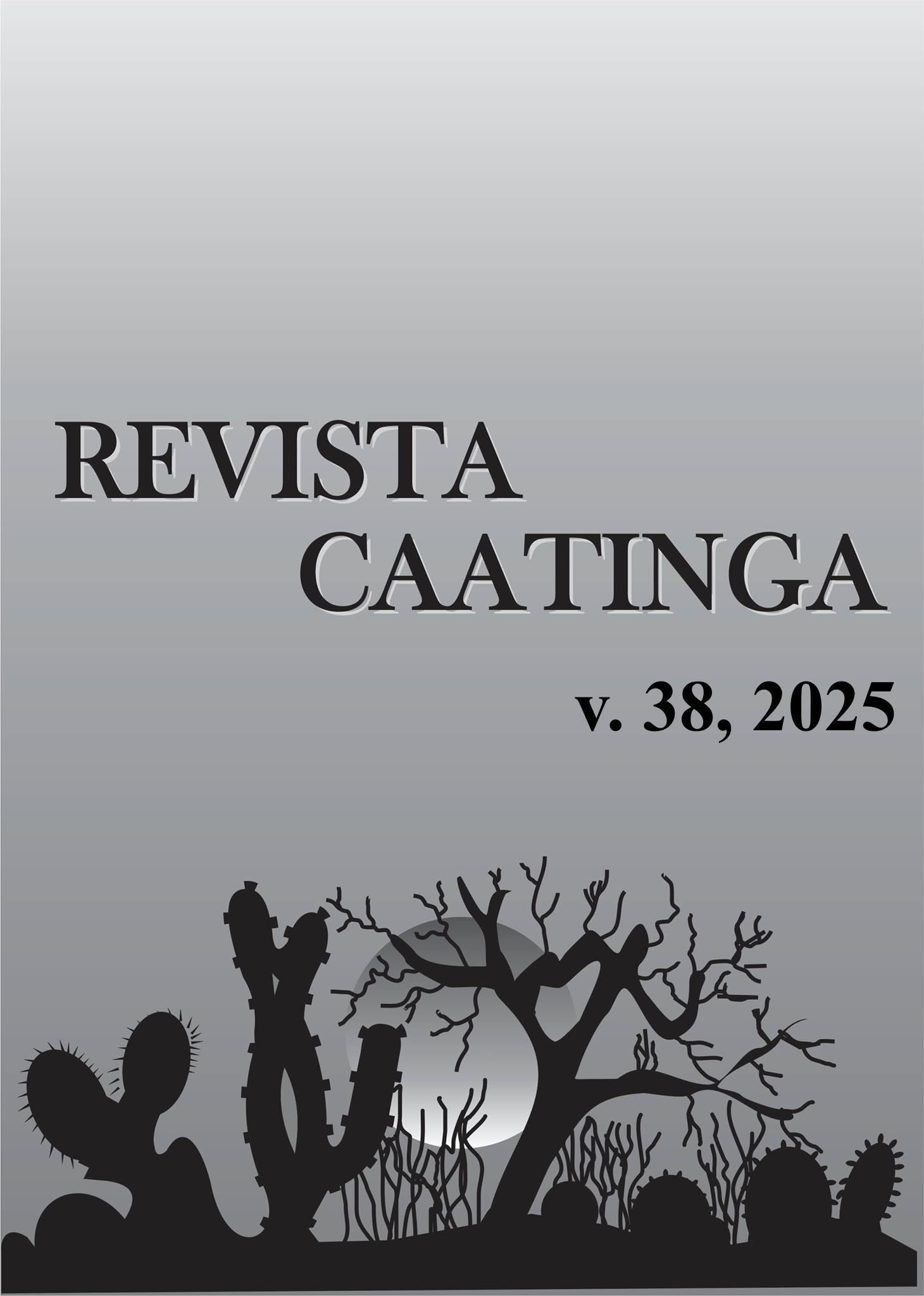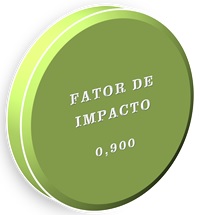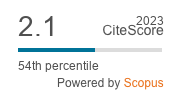Total precipitation and air temperature data obtained from ERA5-Land reanalysis: validation and accuracy
DOI:
https://doi.org/10.1590/1983-21252025v3812578rcKeywords:
Remote sensing. Hinterland. Orbital data. ECMWF.Abstract
This study aimed to validate the monthly data of air temperature and total precipitation through the ERA5-Land reanalysis within 31 years (01/01/1990 to 12/31/2020) in the state of Pernambuco, Brazil, based on the data from 13 automatic weather stations of INMET. The air temperature and precipitation data were stratified by mesoregions of the state (Forest Zone/Coastal, Agreste and Hinterland), and the validation of the ERA5-Land reanalysis data was performed using statistical indices of precision and accuracy of the model. The highest RMSE for total precipitation was obtained in the data of Recife (122.07 mm), and the lowest in the data of the city of Ouricuri (30.26 mm). However, the highest RMSE for air temperature was found in the data of the city of Salgueiro (1.98 ºC), and the lowest in the city of Recife (0.47 °C). The total precipitation data generated by ERA5-Land were compared to the surface data based on the systematic error MBE, with the highest underestimate in Recife (-71.84 mm), the lowest in Petrolina (-0.27 mm) and the highest overestimated in Caruaru (9.05 mm). For mean air temperature, the data estimated by ERA5-Land underestimated the surface data in almost all municipalities, with the highest underestimate observed in Salgueiro (-2.50 ºC) and the highest in Garanhuns (0.68 ºC). Therefore, one can ensure that the ERA5-Land reanalysis estimated total precipitation and mean air temperature satisfactorily, which can be used in several other studies that demand such climate parameters.
Downloads
References
ABOELKHAIR, H.; MORSY, M.; EL AFANDI, G. Assessment of agroclimatology NASA POWER reanalysis datasets for temperature types and relative humidity at 2 m against ground observations over Egypt. Advances in Space Research, 64: 129-142, 2019.
ALVARES, C. A. et al. Köppen’s climate classification map for Brazil. Meteorologische Zeitschrift, 22: 711-728, 2014.
APARECIDO, L. E. O. et al. Accuracy of ECMWF ERA-Interim Reanalysis and its Application in the Estimation of the Water Deficiency in Paraná, Brazil. Revista Brasileira de Meteorologia, 34: 515-528, 2019.
ARAÚJO, C. S. P. et al. Evaluation of air temperature estimated by ERA5-Land reanalysis using surface data in Pernambuco, Brazil. Environmental Monitoring Assessment, 194: 1-13, 2022.
CALLEGARI-JACQUES, S. M. Bioestatística: princípios e aplicações. 1. ed. Porto Alegre, RS: Artmed, 2009. 264 p.
CAMARGO, A. P.; SENTELHAS, P. C. Avaliação do desempenho de diferentes métodos de estimativa da evapotranspiração potencial no estado de São Paulo, Brasil. Revista Brasileira de Agrometeorologia, 5: 89-97, 1997.
CASTRO, B. V. O.; SILVA, F. P.; PIRES, G. D. Avaliação de parâmetros meteorológicos gerados pela reanálise ERA 5 para a cidade de Seropédica, região da Baixada Fluminense-RJ. Revista Engenharia, Meio Ambiente e Inovação, 2: 7-16, 2019.
CHEN, Y. et al. Spatial performance of multiple reanalysis precipitation datasets on the southern slope of central Himalaya. Atmospheric Research, 250: 1-12, 2020.
COAN, B. P.; BACK, A. J.; BONETTI, A. V. Precipitação mensal e anual provável no Estado de Santa Catarina. Revista Brasileira de Climatologia, 15: 122-142, 2015.
COSTA, M. S. et al. Tendências observadas em extremos de precipitação sobre a região Semiárida do Nordeste do Brasil. Revista Brasileira de Geografia Física, 8: 1321-1334, 2015.
COPERNICUS CLIMATE CHANGE SERVICE. ERA5-Land monthly averaged data from 1950 to present. Copernicus Climate Change Service (C3S) Climate Data Store (CDS). Available at: <https://cds.climate.copernicus.eu/>. Access on: Jan, 28. 2023.
ESSOU, G. R.; ARSENAULT, R.; BRISSETTE, F. P. Comparison of climate datasets for lumped hydrological modeling over the continental United States. Journal of Hydrology, 537: 334-345, 2016.
GUEDES, R. V. S. et al. Identificação e classificação espaço-temporal de eventos críticos chuvosos ou secos ocorridos em Pernambuco. Ciência e Natura, 38: 413-428, 2016.
JANATIAN, N. et al. A statistical framework for estimating air temperature using MODIS land surface temperature data. International Journal of Climatology, 37: 1181-1194, 2016.
MARTINS, D. S. et al. Assessing reference evapotranspiration estimation from reanalysis of weather products. An application to the Iberian Peninsula. International Journal of Climatology, 37: 2378-2397, 2017.
MEDEIROS-FEITOSA, J. R. M.; OLIVEIRA, C. W. Comparative study of precipitation data from the TRMM satellite and pluviometric stations in the state of Ceará, Brazil. Revista Geográfica de América Central, 2: 257-280, 2020.
MONTEIRO, L. A.; SENTELHAS, P. C.; PEDRA, G. U. Assessment of NASA/POWER satellite-based Weather system for Brazilian conditions and its impact on sugarcane yield simulation. International Journal of Climatology, 38: 1571-1578, 2018.
NEWMAN, A. J. et al. Gridded ensemble precipitation and temperature estimates for the contiguous United States. Journal of Hydrometeorology, 16: 2481-2500, 2015.
PEREIRA, G. et al. Avaliação dos dados de precipitação estimados pelo satélite TRMM para o Brasil. Revista Brasileira de Recursos Hídricos, 18: 139-148, 2013.
RIBEIRO, A. A. et al. Comparação entre dados meteorológicos obtidos por estações convencionais e automáticas no estado do Piauí, Brasil. Revista Irriga, 2: 220-235, 2017.
R CORE TEAM. R: A language and environment for statistical computing. R Foundation for Statistical Computing, Vienna, Austria, 2020. R: The R Project for Statistical Computing (r-project.org).
SANTOS, L. O. F. et al. Validation of rainfall data estimated by GPM satellite on the Southern Amazon region. Revista Ambiente & Água, 14: 1-9, 2019.
SILVA, C. C. S. et al. Complexity analysis of monthly precipitation in the state of Pernambuco using Sample Entropy. Research, Society and Development, 9: 1-18, 2020a.
SILVA, L. M. C. et al. Validation of air temperature data obtained from the ERA5-land reanalysis in the state of Pernambuco, Brazil. In: INOVAGRI MEETING VIRTUAL, 1., 2020, São Paulo. Anais… São Paulo: UNESP, 2020b. p. 1-10.
TAREK, M.; BRISSETTE, F. P.; ARSENAULT, R. Evaluation of the ERA5 reanalysis as a potential reference dataset for hydrological modeling over North America. Hydrology and Earth System Sciences, 24: 2527-2544, 2020.
TURCO, J. E. P.; CARLETO, N. Integridade de dados meteorológicos para uso em modelo hidrológico. Revista Brasileira de Agricultura Irrigada, 11: 2084-2097, 2017.
VALERIANO, T. T. B. et al. Evaluation of air temperature and rainfall from ECMWF and NASA gridded data for southeastern Brazil. Theoretical and Applied Climatology, 137: 1925-1938, 2019.
VIANNA, L. F. N. et al. Bancos de dados meteorológicos: Análise dos metadados das estações meteorológicas no estado de Santa Catarina, Brasil. Revista Brasileira de Meteorologia, 32: 53-64, 2017.
VIRGENS FILHO, J. S. et al. Desempenho dos modelos CLIGEN, LARS-WG e PGECLIMA_R na simulação de séries diárias de temperatura máxima do ar para localidades do estado do Paraná. Revista de Engenharia Agrícola, 33: 538-547, 2013.
WILLMOTT, C. J. On the validation models. Physical Geography, 2: 184-194, 1981.
Downloads
Published
Issue
Section
License
Os Autores que publicam na Revista Caatinga concordam com os seguintes termos:
a) Os Autores mantêm os direitos autorais e concedem à revista o direito de primeira publicação, com o trabalho simultaneamente licenciado sob a Licença Creative Commons do tipo atribuição CC-BY, para todo o conteúdo do periódico, exceto onde estiver identificado, que permite o compartilhamento do trabalho com reconhecimento da autoria e publicação inicial nesta revista, sem fins comerciais.
b) Os Autores têm autorização para distribuição não-exclusiva da versão do trabalho publicada nesta revista (ex.: publicar em repositório institucional ou como capítulo de livro), com reconhecimento de autoria e publicação inicial nesta revista.
c) Os Autores têm permissão e são estimulados a publicar e distribuir seu trabalho online (ex.: em repositórios institucionais ou na sua página pessoal) a qualquer ponto antes ou durante o processo editorial, já que isso pode gerar alterações produtivas, bem como aumentar o impacto e a citação do trabalho publicado (Veja O Efeito do Acesso Livre).







